Mohenjo-daro
Mohenjo-daro Mound of the Dead Men is an archeological site in the province of [Sindh], [Pakistan]. Built around 2500 BCE, it was one of the largest settlements of the ancient [Indus Valley Civilization], and one of the world's earliest major urban settlements, contemporaneous with the civilizations of ancient Egypt, Mesopotamia, Minoa, and Norte Chico. Mohenjo-daro was abandoned in the 19th century BCE as the Indus Valley Civilization declined, and the site was not rediscovered until the 1920s. Significant excavation has since been conducted at the site of the city, which was designated a UNESCO World Heritage Site in 1980.[3] The site is currently threatened by erosion and improper restoration.
Mohenjo-daro was built in the 26th century BCE. It was one of the largest cities of the ancient Indus Valley Civilization, also known as the Harappan Civilization, which developed around 3000 BCE from the prehistoric Indus culture. At its height, the Indus Civilization spanned much of what is now Pakistan and North India, extending westwards to the Iranian border, south to Gujarat in India and northwards to an outpost in Bactria, with major urban centers at Harappa, Mohenjo-daro, Lothal, Kalibangan, Dholavira and Rakhigarhi. Mohenjo-daro was the most advanced city of its time, with remarkably sophisticated civil engineering and urban planning. When the Indus civilization went into sudden decline around 1900 BCE, Mohenjo-daro was abandoned.
Mohenjo-daro has a planned layout based on a street grid of rectilinear buildings. Most were built of fired and mortared brick; some incorporated sun-dried mud-brick and wooden superstructures. The covered area of Mohenjo-daro is estimated at 300 hectares. The Oxford Handbook of Cities in World History offers a "weak" estimate of a peak population of around 40,000.
Architecture and urban infrastructure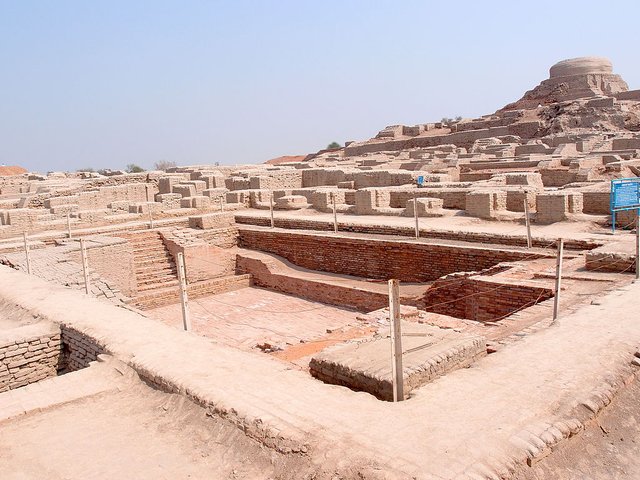
The sheer size of the city, and its provision of public buildings and facilities, suggests a high level of social organization. The city is divided into two parts, the so-called Citadel and the Lower City. The Citadel – a mud-brick mound around 12 metres (39 ft) high – is known to have supported public baths, a large residential structure designed to house about 5,000 citizens, and two large assembly halls. The city had a central marketplace, with a large central well. Individual households or groups of households obtained their water from smaller wells. Waste water was channeled to covered drains that lined the major streets. Some houses, presumably those of more prestigious inhabitants, include rooms that appear to have been set aside for bathing, and one building had an underground furnace (known as a hypocaust), possibly for heated bathing. Most houses had inner courtyards, with doors that opened onto side-lanes. Some buildings had two stories.
Numerous objects found in excavation include seated and standing figures, copper and stone tools, carved seals, balance-scales and weights, gold and jasper jewellery, and children's toys. Many important objects from Mohenjo-daro are conserved at the National Museum of India in Delhi and the National Museum of Pakistan in Karachi. In 1939, a representative collection of artefacts excavated at the site was transferred to the British Museum by the Director-General of the Archaeological Survey of India.
In 1927, a seated male soapstone figure was found in a building with unusually ornamental brickwork and a wall-niche. Though there is no evidence that priests or monarchs ruled Mohenjo-daro, archaeologists dubbed this dignified figure a "Priest-King." The sculpture is 17.5 centimetres (6.9 in) tall and depicts a bearded man with a fillet around his head, an armband, and a cloak decorated with trefoil patterns that were originally filled with red pigment. The two ends of the fillet fall along the back. The hair is carefully combed towards the back of the head but no bun is present. The flat back of the head may have held a separately carved bun, or it could have held a more elaborate horn and plumed headdress. Two holes beneath the highly stylized ears suggest that a necklace or other head ornament was attached to the sculpture. The left shoulder is covered with a cloak decorated with trefoil, double circle and single circle designs that were originally filled with red pigment. Drill holes in the center of each circle indicate they were made with a specialized drill and then touched up with a chisel. The eyes are deeply incised and may have held inlay. The upper lip is shaved, and a short combed beard frames the face.
Pashupati seal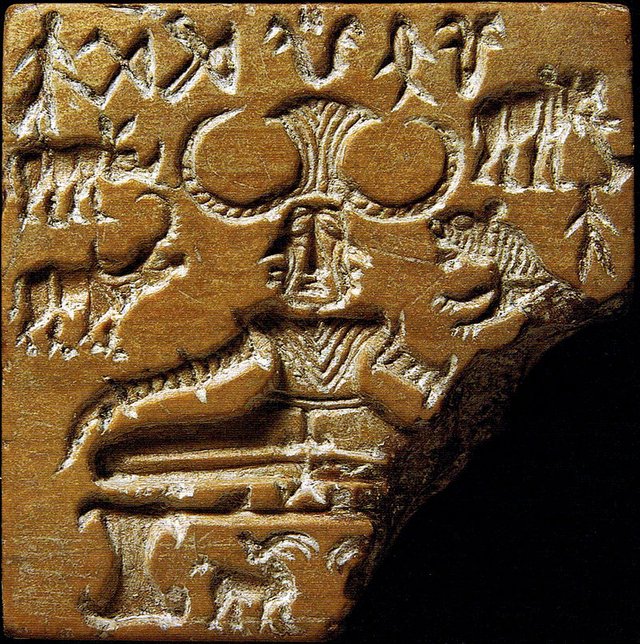
A seal discovered at the site bears the image of a seated, cross-legged and possibly ithyphallic figure surrounded by animals. The figure has been interpreted by some scholars as a yogi, and by others as a three-headed "proto-Shiva" as "Lord of Animals".
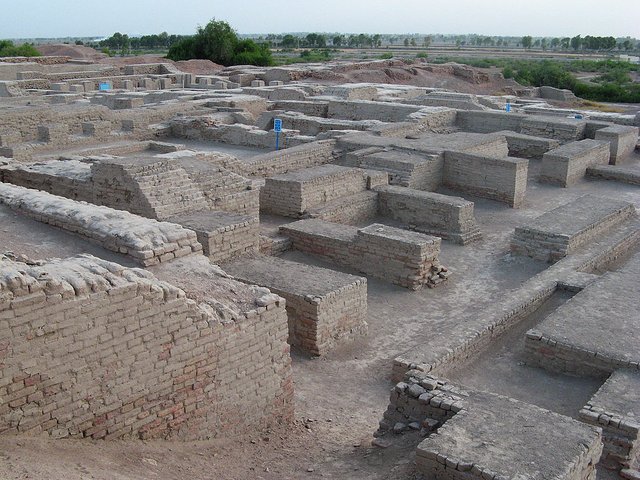
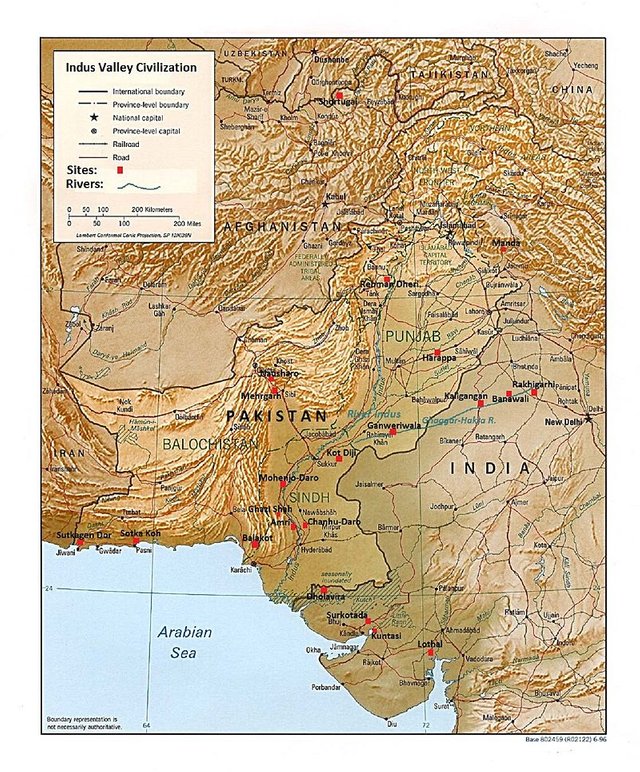
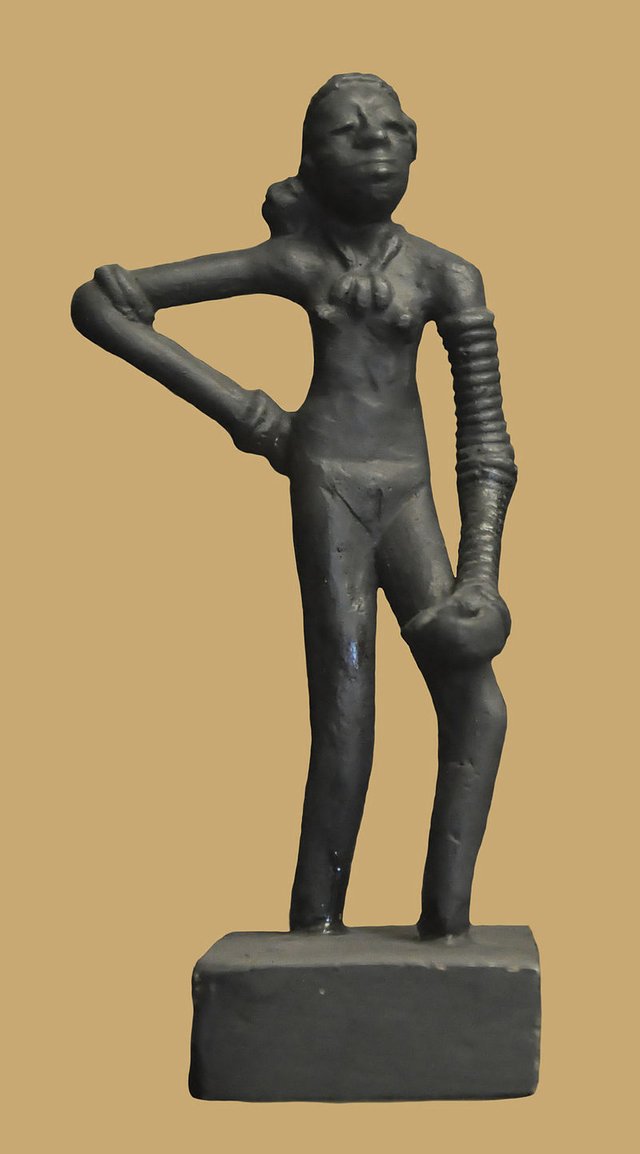

Very interesting article.
Thank you.
I will follow you
And i hope to read your article sooner